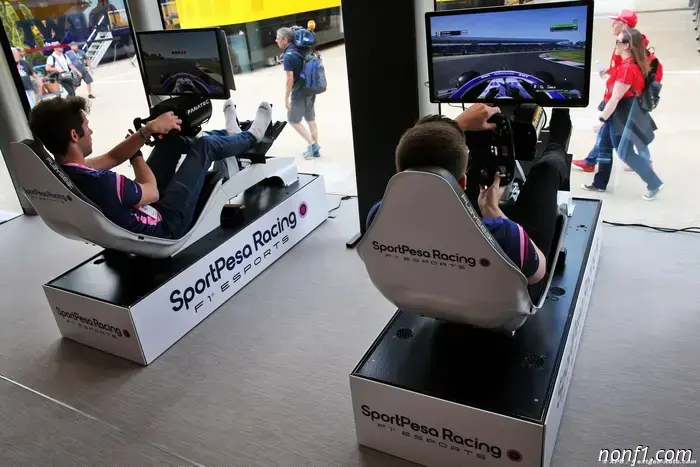
Crossover in esports: when F1 drivers compete live against sim racers.
Author:
15 October 2025 - 10:30
For many years, Formula 1 has epitomized the pinnacle of motorsport, defined by precision, speed, and exceptional human talent that has crafted a global sensation. However, recent years have introduced an intriguing development: professional F1 drivers are now entering the virtual arena to compete against elite sim racers. What was previously a niche gaming segment is now firmly within the mainstream spotlight.
The Covid-19 pandemic accelerated this shift. With live races canceled or delayed, drivers like Charles Leclerc, George Russell, and Max Verstappen began streaming their racing sessions online. They competed in virtual races for various causes, or sometimes just for glory. This initiative captivated millions of viewers, many of whom were surprised by the formidable skills of the sim racers challenging the professionals.
What happens when the finest in motorsport transition to a digital landscape? How do professional drivers adapt, and what implications does this have for fans and the industry?
Worlds Collide: The Appeal of F1 Pros and Sim Racers Competing
Why is this crossover so effective? It begins with mutual respect. The top sim racers are impressively fast, with some even being scouted by actual racing teams. The divide between elite sim racing and real-life racing is narrowing. Modern racing simulators are much more than mere games; they accurately emulate physics, tire degradation, and engine characteristics. Some F1 drivers now acknowledge that sim racing is essential to their training regimen.
During major online events, like the Virtual Grand Prix Series, we witness both factions challenge each other. Actual F1 stars provide their racing expertise and strategic thinking, while sim racers often excel in speed and accumulated practice time on these platforms. It's not uncommon for a virtual expert to outpace a professional driver.
Platforms such as BetFury sports have recognized this trend, offering fans a one-stop-shop to track important virtual and real-world racing events, providing new ways to engage with these hybrid competitions. BetFury has become a central hub for those wishing to keep tabs on live F1 races and sim racing tournaments, featuring odds, statistics, and streaming options for fans wanting to stay updated on this evolving landscape.
For fans, this intersection grants unprecedented access—watching favorite drivers in new settings, engaging on social media, and even racing against them in public lobbies if circumstances permit.
What Distinguishes Sim Racing from Real Racing?
At first glance, sim racing may appear to be mere “gaming,” but any F1 driver who has transitioned will tell you it’s a challenge in its own right. Here are a few differentiating factors between the two worlds:
● Physical feedback: Real vehicles provide drivers with cues through g-forces, vibrations, and genuine tactile sensations. High-end sim rigs, however, fail to completely replicate this, leading sim racers to heavily rely on visual aids and force feedback from their wheels.
● Risk factor: Manipulating limits in a real car can lead to significant consequences. In a simulation, a crash merely costs a virtual race, allowing drivers to experiment with more daring maneuvers and unconventional tactics.
● Setup and tuning: Both realms call for technical adjustments, but sim racing necessitates a deep understanding of digital tuning menus, tire models, and swift responsiveness to game updates. Real-world drivers often find this learning curve challenging.
● Stamina and nerves: Both disciplines require concentration; however, the pressure experienced during an actual F1 event differs. Nonetheless, extended endurance races or online tensions in simulators can test mental endurance just as intensely.
● Home advantage: Many sim racers have invested years mastering tracks and setups in a digital arena. Professional drivers may be caught off guard by this, resulting in unexpected outcomes during crossover competitions.
Notable Matchups: The Best of Both Genres
The collaborations between F1 drivers and sim racers have produced memorable moments. Here are a few memorable instances:
Virtual Grand Prix Series (2020): With the actual F1 season on pause, official races transitioned online, featuring Lando Norris, George Russell, and Charles Leclerc racing alongside sim stars like Cem Bölükbaşı and Enzo Bonito. Fans witnessed the speed of sim professionals, who often outqualified or defeated real-world F1 drivers.
The Race All-Star Series: This weekly sim racing league included both real-world and virtual racing legends, illustrating that the gap is narrower than many believed, with sim specialists frequently securing podium finishes.
Veloce Pro Series and SRO Esports: These leagues united factory drivers, esports teams, and even some retired champions, leading to increased mainstream attention and evidence that talent is transferable between both realms.
How F1 Drivers Prepare for Sim Competitions
Prominent F1 drivers take sim racing very seriously. Many have invested in advanced home setups, often costing thousands, featuring direct drive wheels, hydraulic pedals, and triple-screen displays or VR headsets.
Some insights from the drivers include:
● Practice, practice,


Other articles
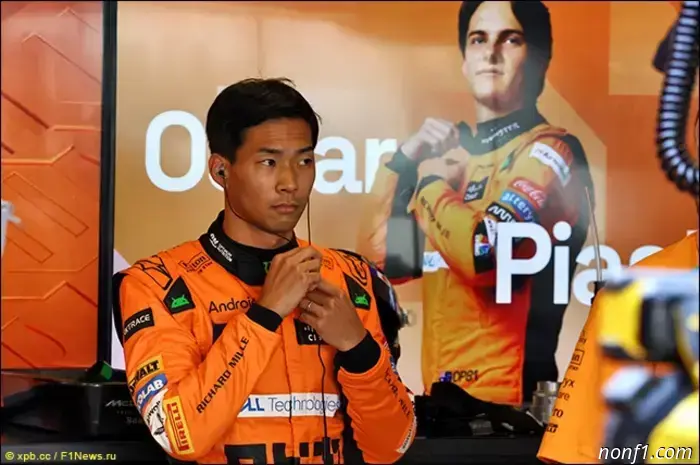 How much does it cost to participate in the first training session?
Court documents in the McLaren v. Palou case reveal how much drivers are willing to pay...
How much does it cost to participate in the first training session?
Court documents in the McLaren v. Palou case reveal how much drivers are willing to pay...
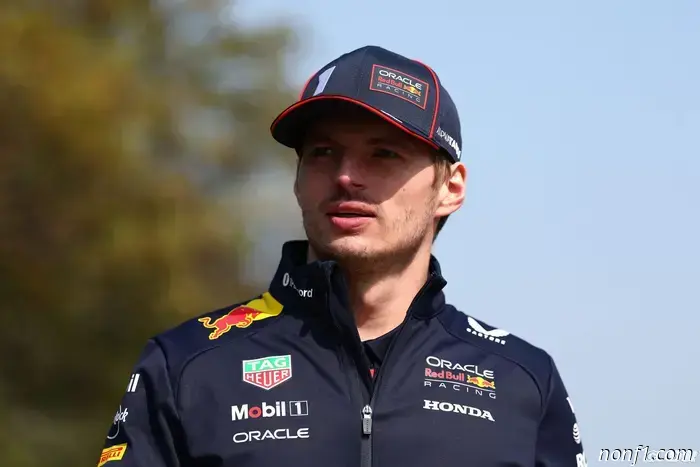 Verstappen is not the 'de facto leader' at Red Bull.
Formula 1 | According to Dutch journalist Erik van Haren, Max Verstappen's increasing influence within Red Bull does not equate to him being the unofficial team leader. (…)
Verstappen is not the 'de facto leader' at Red Bull.
Formula 1 | According to Dutch journalist Erik van Haren, Max Verstappen's increasing influence within Red Bull does not equate to him being the unofficial team leader. (…)
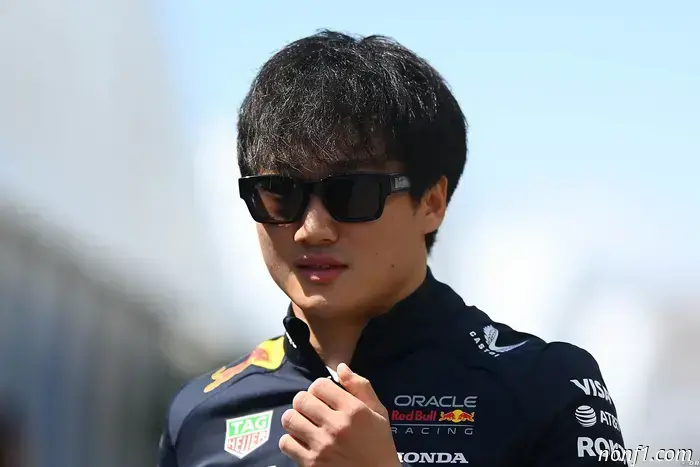 Tsunoda encounters new visa issues before the US GP.
Formula 1 | Yuki Tsunoda encountered travel issues once more—this time while attempting to enter the United States for this weekend's US Grand Prix in Austin, Texas. (…)
Lewis Hamilton prepared a report for Ferrari's management.
Lewis Hamilton submitted another report to Ferrari's senior management, proposing measures to overcome the crisis...
Tsunoda encounters new visa issues before the US GP.
Formula 1 | Yuki Tsunoda encountered travel issues once more—this time while attempting to enter the United States for this weekend's US Grand Prix in Austin, Texas. (…)
Lewis Hamilton prepared a report for Ferrari's management.
Lewis Hamilton submitted another report to Ferrari's senior management, proposing measures to overcome the crisis...
 Aston Martin did not discuss Alonso's retirement.
Fernando Alonso's contract with Aston Martin expires at the end of 2026, and the Spanish driver has already named the conditions under which next year would be his last in Formula 1. Aston Martin boss Andy Cowell said he had not discussed Alonso's departure from the team.
Aston Martin did not discuss Alonso's retirement.
Fernando Alonso's contract with Aston Martin expires at the end of 2026, and the Spanish driver has already named the conditions under which next year would be his last in Formula 1. Aston Martin boss Andy Cowell said he had not discussed Alonso's departure from the team.
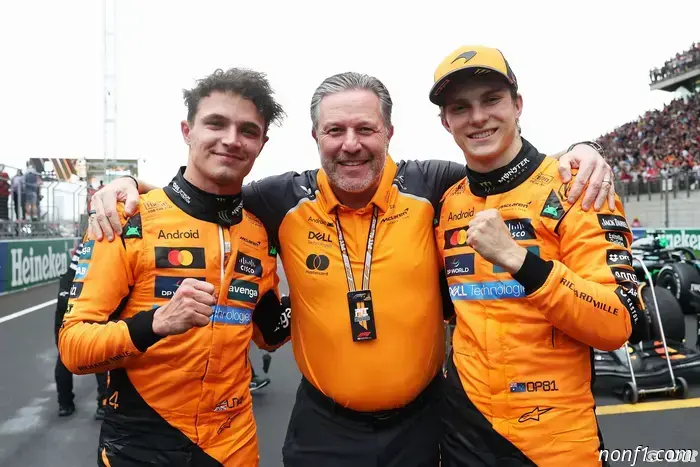 Brown refutes Palou's assertion and dismisses any alterations to the team strategy.
Formula 1 | Zak Brown has rejected Alex Palou's assertion in court that he was never in favor of Oscar Piastri taking a seat at McLaren, labeling the claim as (…)
Brown refutes Palou's assertion and dismisses any alterations to the team strategy.
Formula 1 | Zak Brown has rejected Alex Palou's assertion in court that he was never in favor of Oscar Piastri taking a seat at McLaren, labeling the claim as (…)
Crossover in esports: when F1 drivers compete live against sim racers.
Formula 1 | For many years, Formula 1 has symbolized the pinnacle of motorsport. Precision, velocity, and human talent have combined to create a worldwide sensation. However, in recent times…
